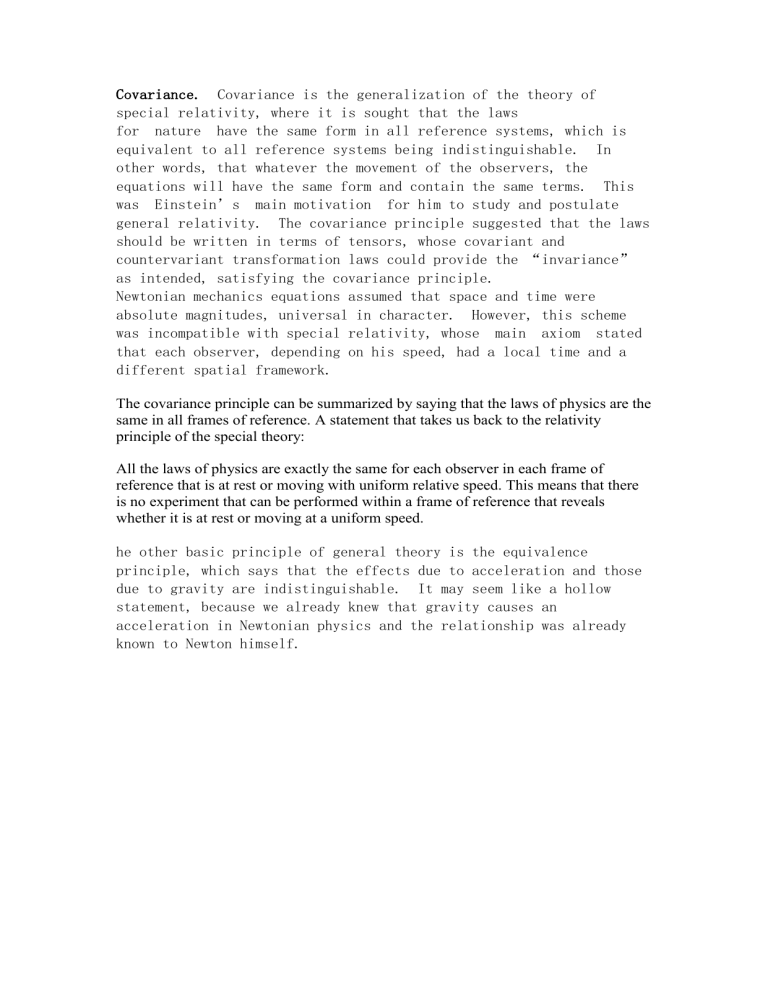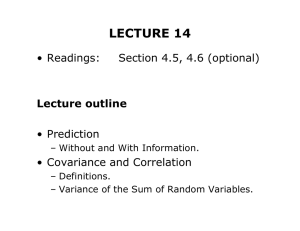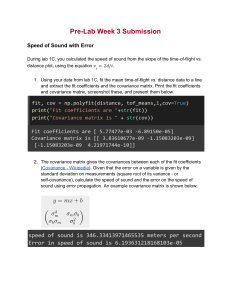
Covariance. Covariance is the generalization of the theory of special relativity, where it is sought that the laws for nature have the same form in all reference systems, which is equivalent to all reference systems being indistinguishable. In other words, that whatever the movement of the observers, the equations will have the same form and contain the same terms. This was Einstein’s main motivation for him to study and postulate general relativity. The covariance principle suggested that the laws should be written in terms of tensors, whose covariant and countervariant transformation laws could provide the “invariance” as intended, satisfying the covariance principle. Newtonian mechanics equations assumed that space and time were absolute magnitudes, universal in character. However, this scheme was incompatible with special relativity, whose main axiom stated that each observer, depending on his speed, had a local time and a different spatial framework. The covariance principle can be summarized by saying that the laws of physics are the same in all frames of reference. A statement that takes us back to the relativity principle of the special theory: All the laws of physics are exactly the same for each observer in each frame of reference that is at rest or moving with uniform relative speed. This means that there is no experiment that can be performed within a frame of reference that reveals whether it is at rest or moving at a uniform speed. he other basic principle of general theory is the equivalence principle, which says that the effects due to acceleration and those due to gravity are indistinguishable. It may seem like a hollow statement, because we already knew that gravity causes an acceleration in Newtonian physics and the relationship was already known to Newton himself.




